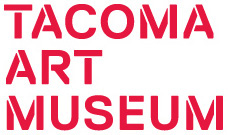Adelaide Hanscom
Adelaide Hanscom was an early 20th-century photographer who was commissioned to create images for some of the first books using photography to illustrate literary works. She was born in Empire City, Oregon (now Coos Bay) in 1875. She studied art and design at the University of California and began experimenting with photography at the Mark Hopkins Institute of Art (now the San Francisco Art Institute).
In 1900 she opened a studio with Blanch Cumming in downtown San Francisco. Her most prominent project from this period was the 1905 commission to illustrate a lavishly produced edition of The Rubaiyat, a collection of poems by the medieval Persian poet Omar Khayyam (1038-1141). Considered Hanscom’s masterwork, the entire publication was an Arts and Crafts tour-de-force from hand illuminated text to elaborate hand-stamped bindings. Hanscom’s images for the book were allegorical tableaux featuring figures in ancient costume, enacting parts of Khayyam's verse. She had a number of prominent figures from the San Francisco arts community act as models including the poet Joaquin Miller.
In 1906 during the San Francisco earthquake and fire, Hanscom’s studio was destroyed and all the glass plates for the Rubaiyat illustrations were lost. She relocated to Seattle opening a photography studio with Getrude Wilson focusing on society portraits. She also won the competition to create the emblem for the Alaska-Yukon-Pacific Exposition held in Seattle in 1909.
Around 1910 Hanscom relocated briefly to Alaska, then settled in California. Among her major commissions during this period, she created illustrations for an edition of Elizabeth Barrett Browning’s Sonnets from the Portuguese in a style similar to her images for The Rubaiyat. She died in Pasadena, California in 1931.
Hanscom was an advocate of pictorialist photography. She heavily manipulated her glass plate negatives to achieve painterly effects in her images. She became an associate member of the Photo-Secession, an early-20th-century group, led by Alfred Stieglitz and F. Holland Day,that promoted photography as a fine art. Stieglitz also exhibited a number of her works at his gallery in New York.
[compiled from online and published sources]





